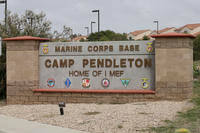PALMER, Alaska -- When North Korea hits "go" on one of its top-secret underground weapons tests, the first person outside that country to know about it isn't someone monitoring a global web of sensors at the U.S. Air Force Technical Applications Center (AFTAC).
Instead, it's one of the scientists on shift watching and waiting for a tsunami to appear on monitors in the National Oceanic and Atmospheric Administration's innocuous-looking National Tsunami Warning Center, which is nestled next to family homes in this picturesque small town.
This center serves a vital safety role. The ability of these scientists to quickly analyze earthquake data could be the difference between life and death for residents in high-risk tsunami areas.
The center's high-tech tracking equipment, which can analyze seismic data from around the world within minutes, means the scientists also see other earthshaking events sooner than anyone else, officials here said.
Events such as North Korea's nuclear bomb tests.
The center isn't exactly a regular hotbed of activity. Other than the hum of computers and the clacking of a few keyboards, the scientists -- a collection of seismologists, engineers and other experts -- spend most their days quietly reading data, problem solving on the best ways to measure potential tsunami activity, and waiting for the Earth to do something fascinating but hazardous.
Until, that is, the seismic alarm sounds, telling the center's on-duty scientists -- there's at least two in the building 24/7 -- that there's been an earthquake. Or an underground bomb test.
That's when the waiting ends, and the action starts.
That warning alarm was the very first clue that something unusual was up Sept. 3, when North Korea detonated what U.S. officials have since determined was the country's largest nuclear test to date.
The center's scientists rushed to the command center, but within moments could see that what triggered their system was no ordinary earthquake.
A few minutes of data collection later, and it was clear that the cause of the alarm was a man-made event from North Korea that was bigger than anything the center had seen before out of that country.
Ken Macpherson, a seismologist at the center who was on duty for North Korea's September 2016 test, said a few clues make clear right away that they're dealing with a bomb, not an earthquake.

First, the seismic waves sent out from a bomb look much different on the monitors than those caused by the shifting of tectonic plates that results in an earthquake, he said.
Also, earthquakes typically occur in predictable regions, where there is a history of seismic activity. North Korea has no such history.
And the Earth rarely sets off an earthquake on a schedule. Both the September 2016 event that Macpherson witnessed and the much larger test this year occurred almost on the hour or half-hour mark.
"You can imagine someone sitting there with a watch and pushing the button at the approved time," he said.
Once the scientists confirm that the event is outside their wheelhouse, they shoot off a message to their "partner organizations" -- including the Air Force's AFTAC, who by now may have started to understand the data themselves, to let them know what they have seen.
"Here at the tsunami warning center, we're not thinking politically. We're just thinking about the earth science," Macpherson said.
"We sent out an observatory message to our partner organizations about this time saying this is an interesting seismic event; you might want to take a look at it," he said.
Once that message is sent, it's just another day at the office for the scientists here.
At least, that is, until a real earthquake hits or North Korea conducts another test.
-- Amy Bushatz can be reached at amy.bushatz@military.com.









